How to Tell if Graph is Continuous on the Domain
Domain of a Graph
Find the domain of a graph of a function; examples with solutions are presented. First the graphical meaning of the concept of the domain of a function is explained.
Domain of a Graph of a FunctionThe implied domain of a function f is the set of all values of x for which f(x) is defined and real. The graph of a function f is the set of all points (x , f(x)). Hence, For a function f defined by its graph, the implied domain of f is the set of all the real values x along the x-axis for which there is a point on the given graph.As an example there are points on the graph below at x = - 3, - 2.5, -2, -0.5 , 2,5, 3, 3.2, 4. These values and more other values of x are included in the domain of f. There are no points on the graph at x = - 1 (open circle on the graph) , 0.5 , 1, 1.5 , 2 (open circle). These values and more other values of x are not included in the domain.    With these ideas and definition, we will now solve examples where the whole domain of a given graph is found. Domain of a Graph; Examples with Detailed SolutionsExample 1Find the domain of the graph of the function shown below and write it in both interval and inequality notations. The graph starts at x = - 4 and ends x = 6. For all x between -4 and 6, there points on the graph. Hence the domain, in interval notation, is written as Example 2What is the domain, in interval notation, of the graph of the function shown below? The graph starts at x = - 4 and ends x = 4. There are points on the graph for all values of x between - 4 and 4 including at - 4 and 4. Hence the domain, in interval notation, is written as Example 3What is the domain of the graph of the function? The graph starts at x = - 8 and ends x = 8. The graph is defined for all x between - 8 and 8. We include - 8 and 8 because of the closed circles at x = - 8 and x = 8. Hence the domain, in interval notation, is written as Example 4Find the domain of the graph of the function shown below. The graph starts at x = - 4 and ends x = 6. The graph is defined for all x between - 4 and 6. The interval is closed at - 4 and 6 because of the closed circles at x = - 4 and x = 6. Hence the domain, in interval notation is written as Example 5Write the domain of the graph of the function shown below in interval and inequality notations. The graph starts at values of x > - 4 and ends at values of x < 4. x = - 4 and x = 4 are not included in the domain because of the open circles at these values. Hence the domain, in interval notation, is written as Example 6Write the domain of the graph of the function shown below in interval notation. The graph starts at values of x = - 8 and ends at values of x < 2. The open circles at x = - 4, x = -2 and x = 2 indicates that these values are not included in the domain. Hence the domain, in interval notation, is written as Example 7Write the domain of the graph of the function shown below in inequality notation. The graph starts at x = - 4 and ends x < 2. The domain does not include x = 2 because of the open circle at x = 2. Hence the domain, in inequality notation, is written as Example 8Write the domain of the graph of the function shown below using interval notation The graph is made up of three parts. The left part is defined for all values of x between - 4 and - 2. The part in the center is defined on the interval x > 0 and x ≤ 4. The part on the right is defined for x > 6 and x ≤ 6. The domain is written as a union of three intervals as follows More Links and ReferencesFind domain and range of functions,Find the domain of a function , Step by Step Solver to Find the Domain of the Square Root of a Linear Function, Find the Domain of the Square Root of a Quadratic Function |

Source: https://www.analyzemath.com/DomainRange/domain-of-a-graph.html
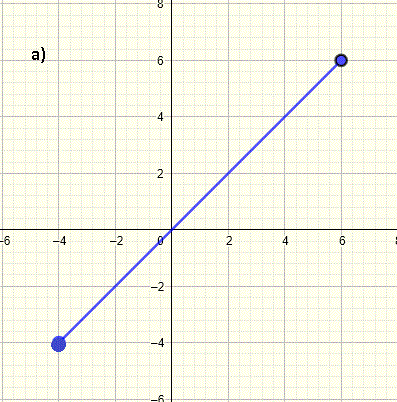
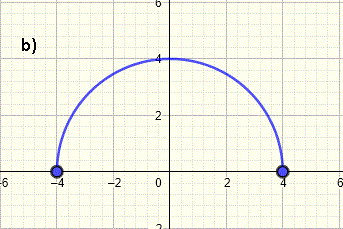
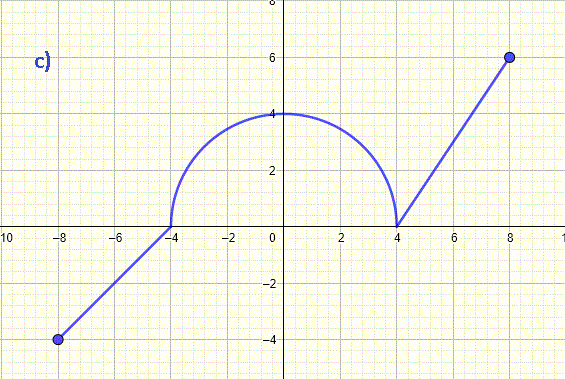
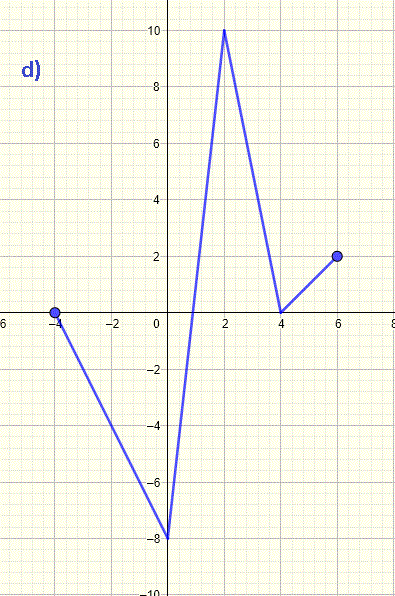

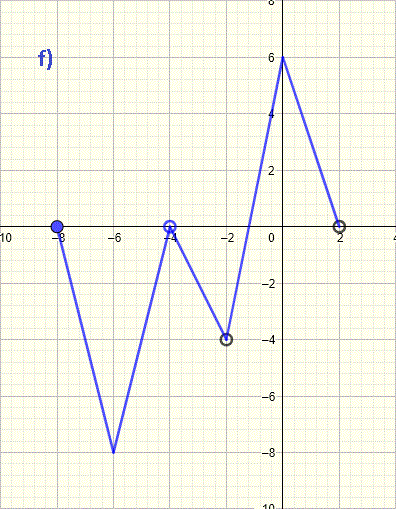
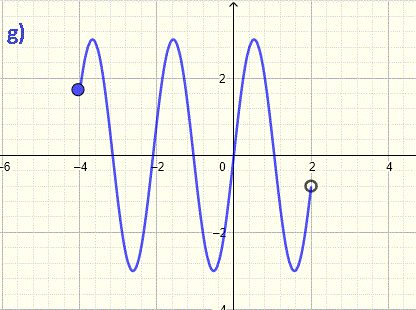
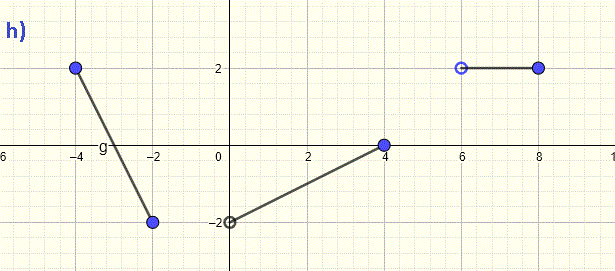
0 Response to "How to Tell if Graph is Continuous on the Domain"
Post a Comment